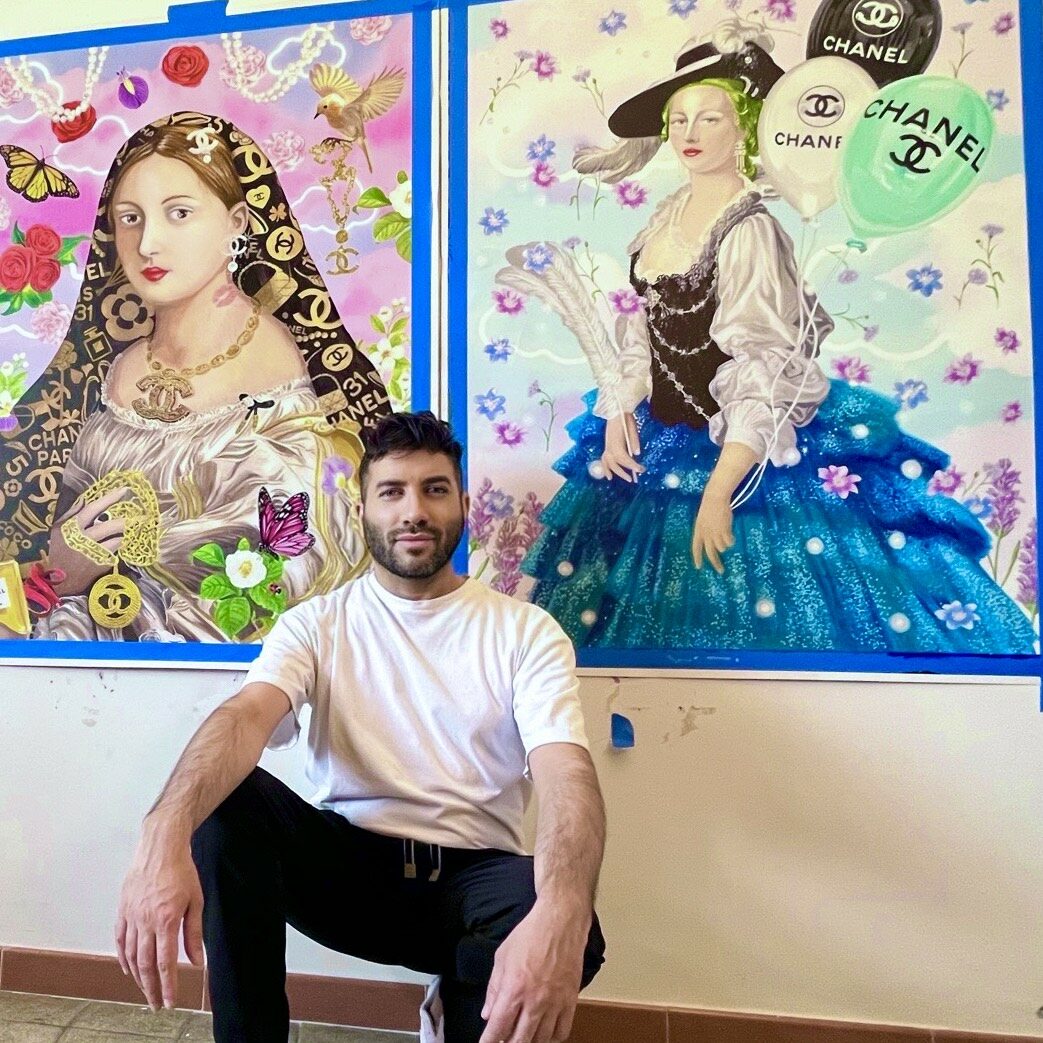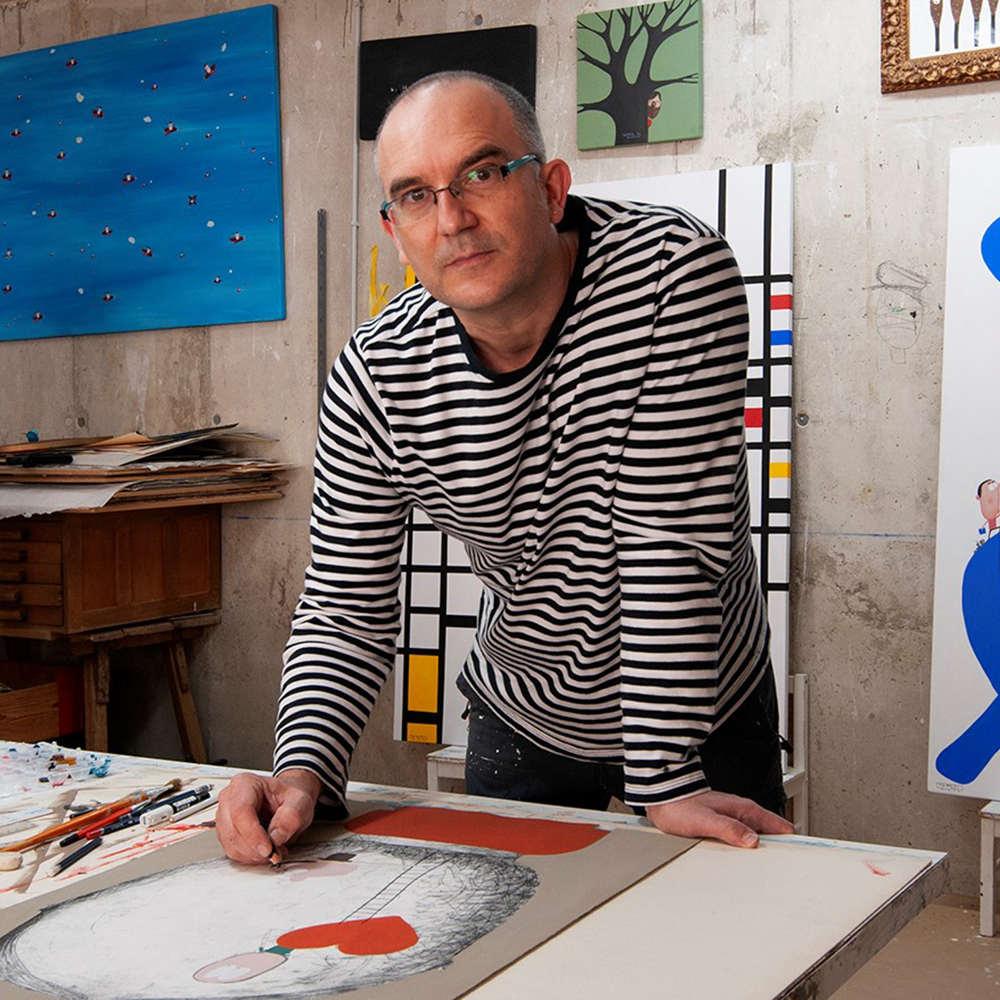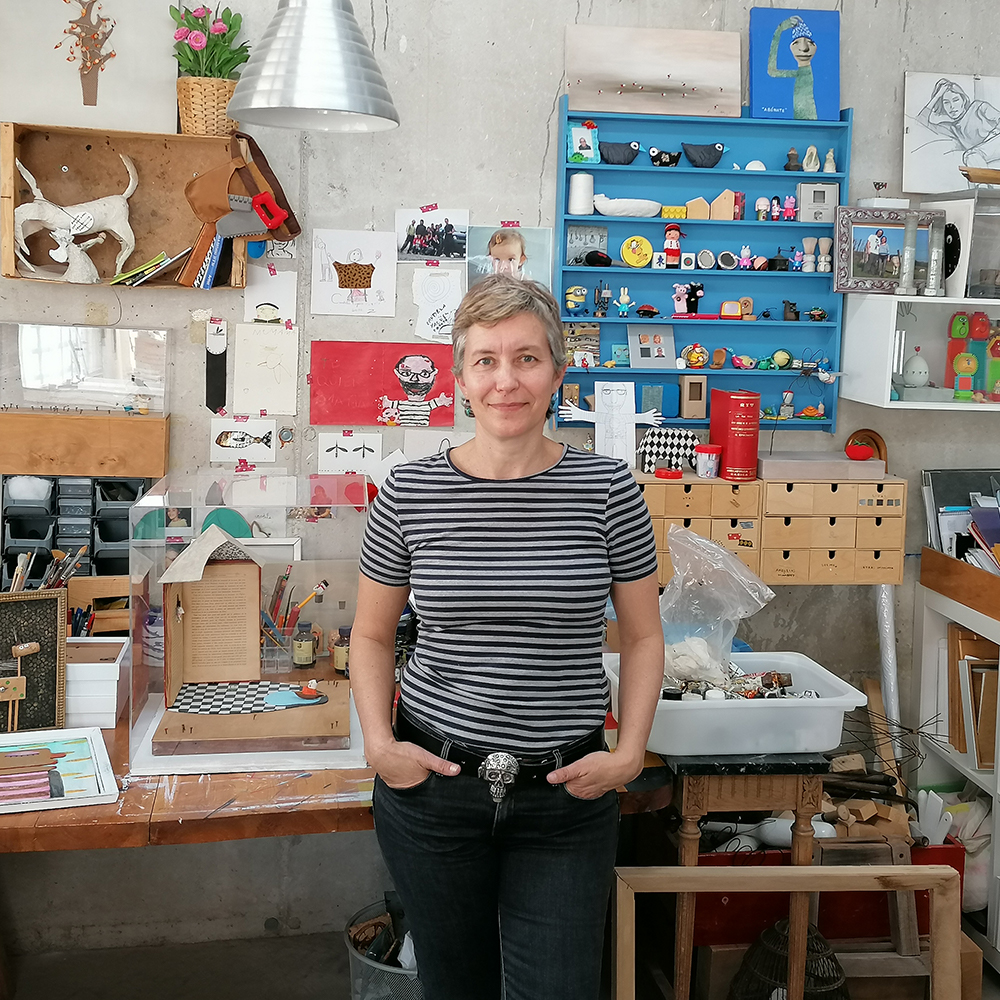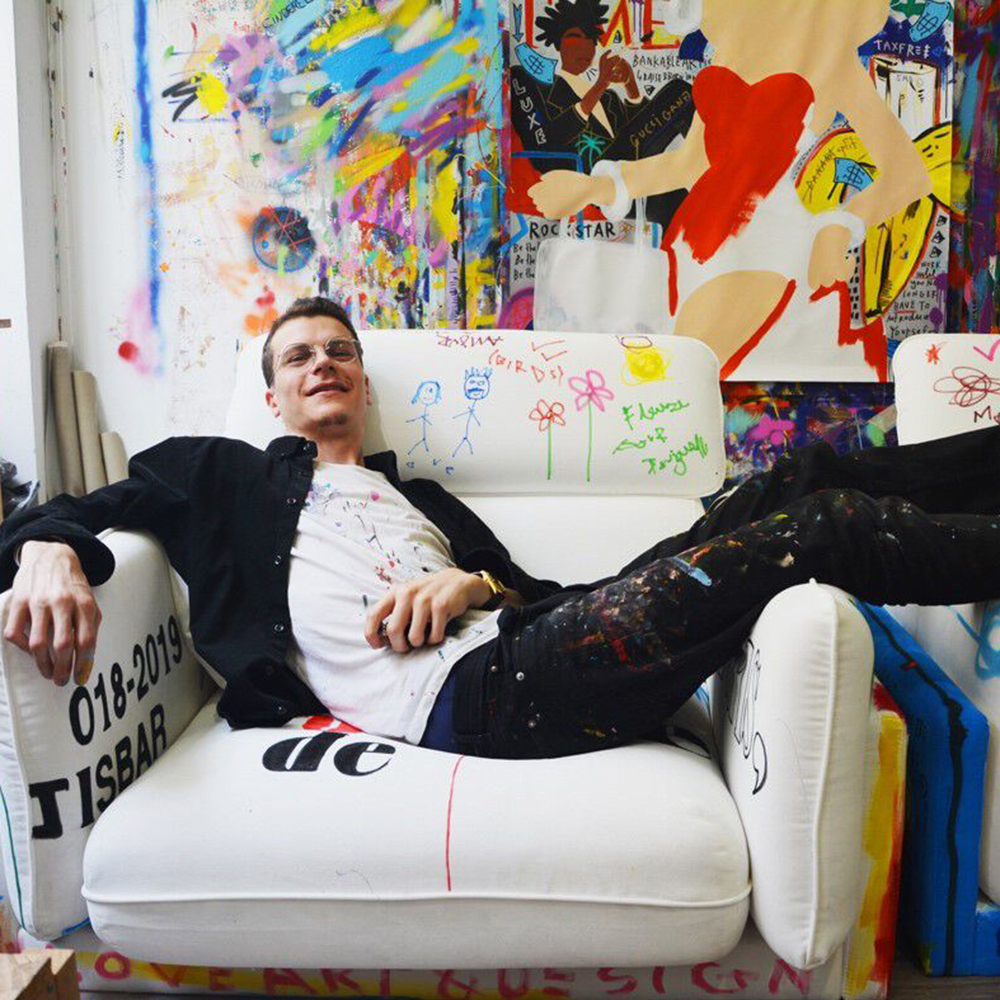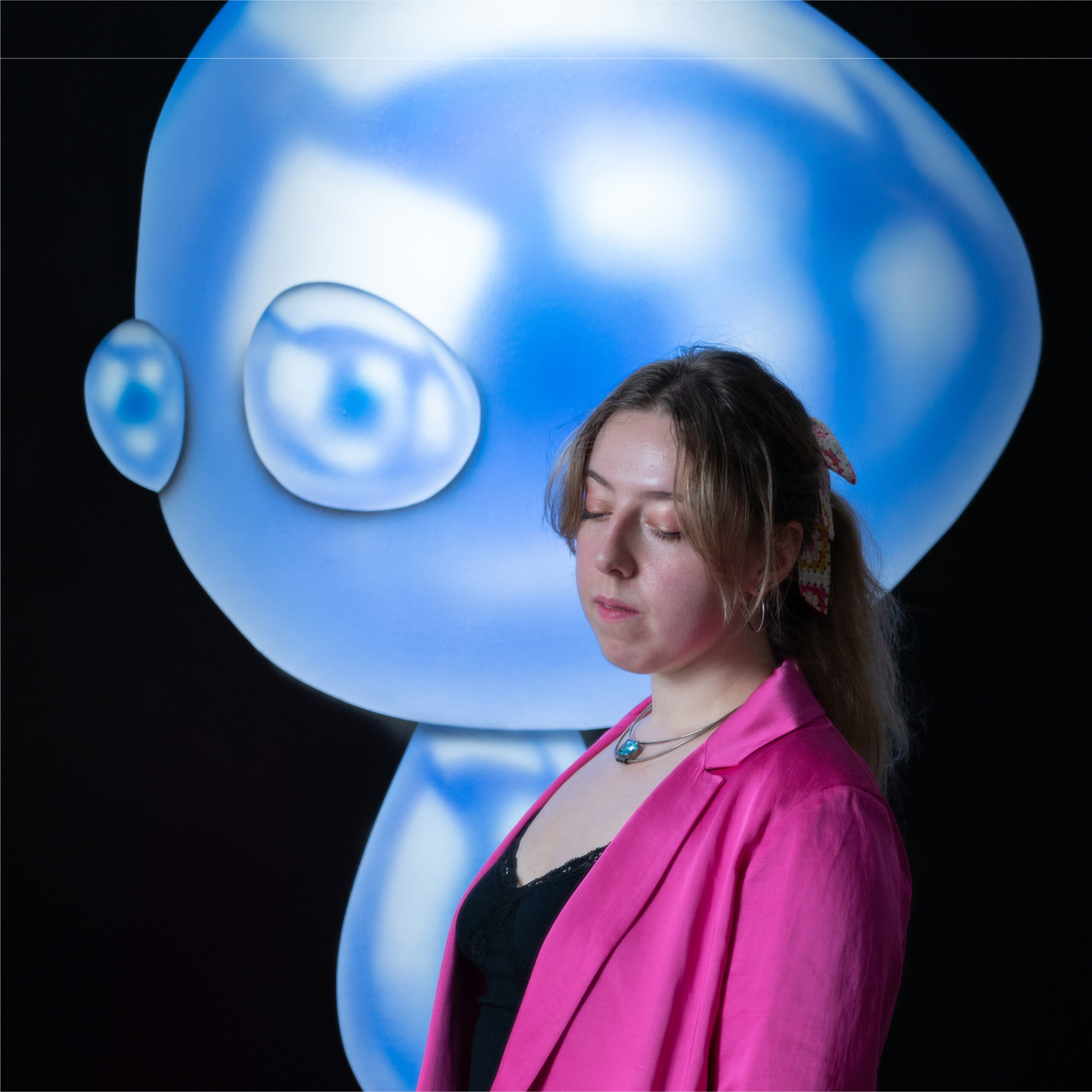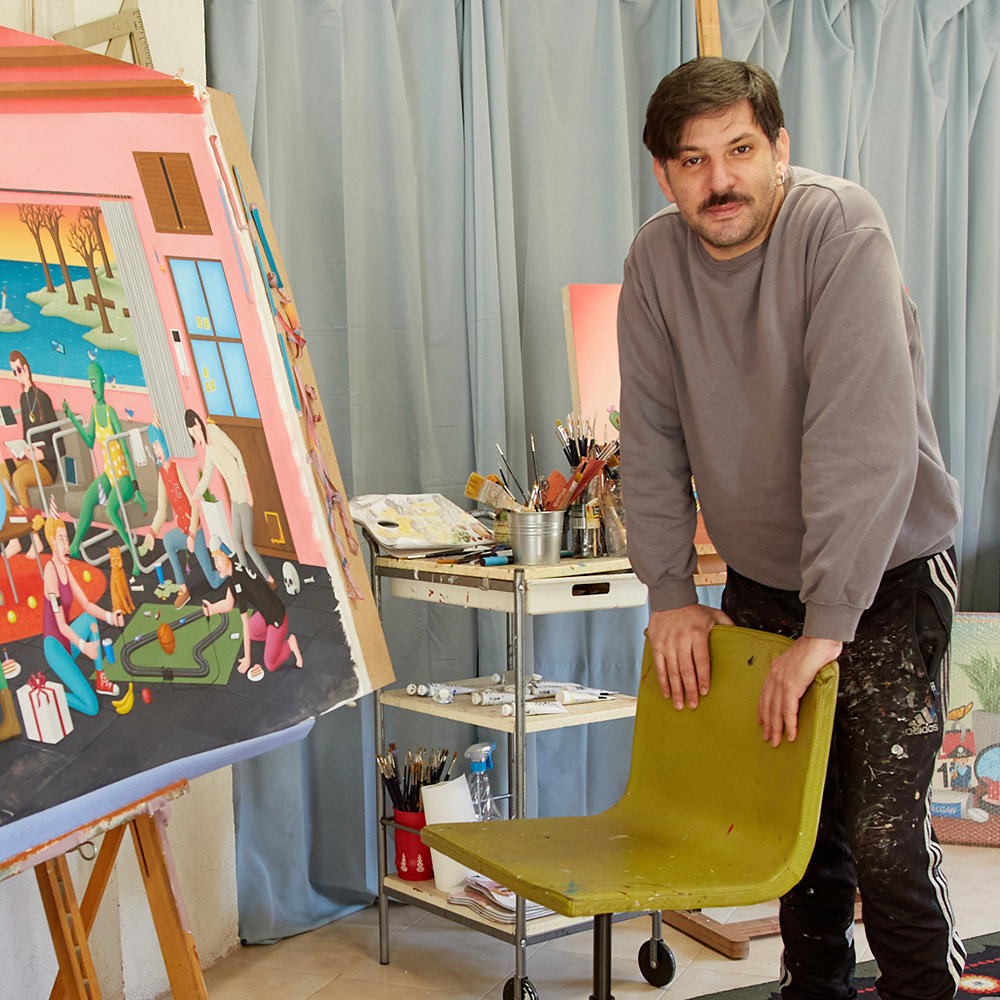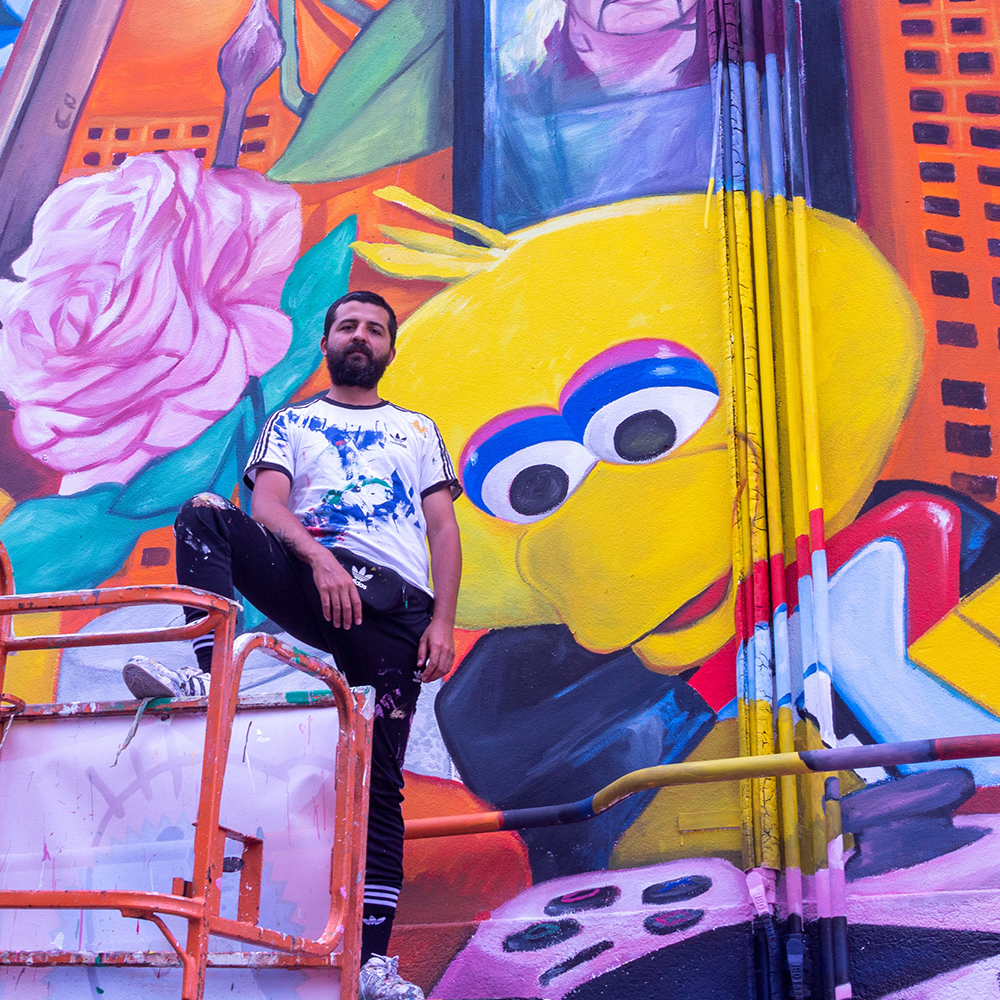
Nicolás Romero began twenty years ago signing and doing graffiti in the streets of his native Buenos Aires, a city that was living the hangover of a military dictatorship that had lasted eight years and that at that time understood street art as an expression of freedom. He moved away from graffiti to start developing a mural work with which he experiments and plays with its symbolic charge in his confrontation with public space.
At present, Nicolás is developing his work around the “Dead Natures”, with which through the union of elements he has found a way to use the image as a means of social reflection and anthropological research. He works through traces that he finds in his most immediate context, the result of the social network and symbols born from the coexistence of social, cultural and economic factors. From soft drink bottles to religious prints, political symbols, contemporary icons or something as apparently innocent as fruits and vegetables are part of these compositions that he uses as a bridge to talk about more complex realities.
